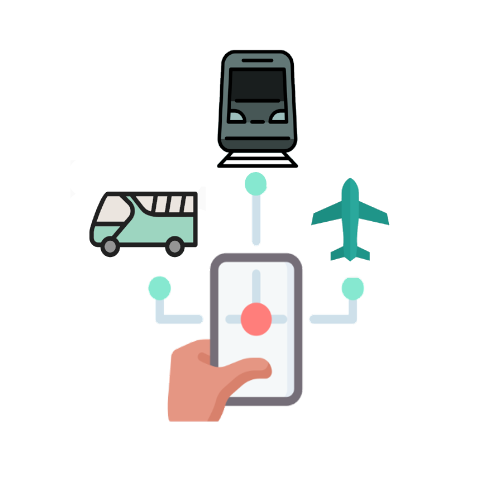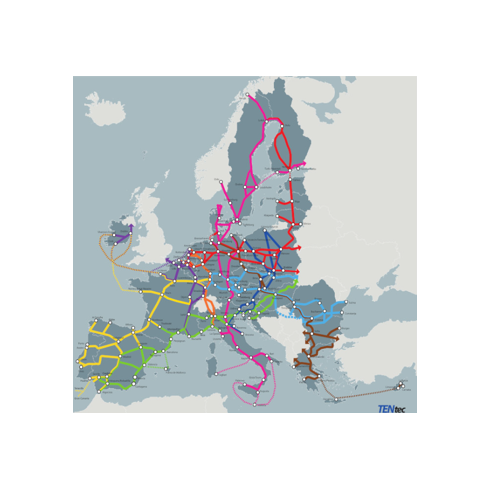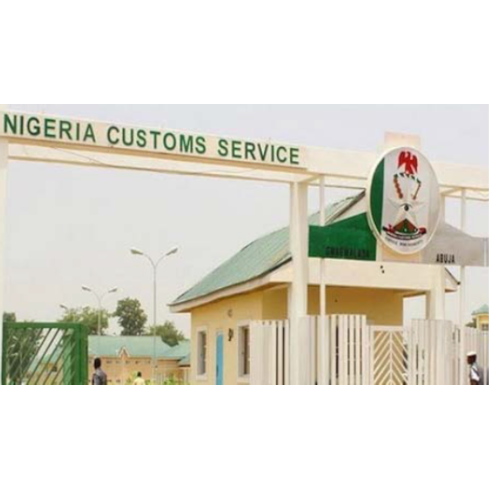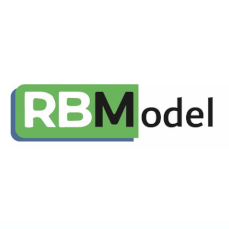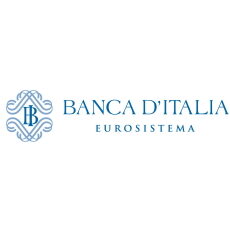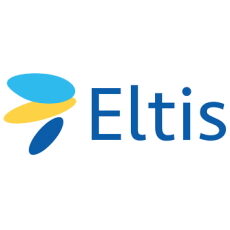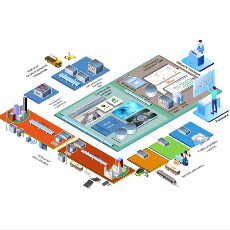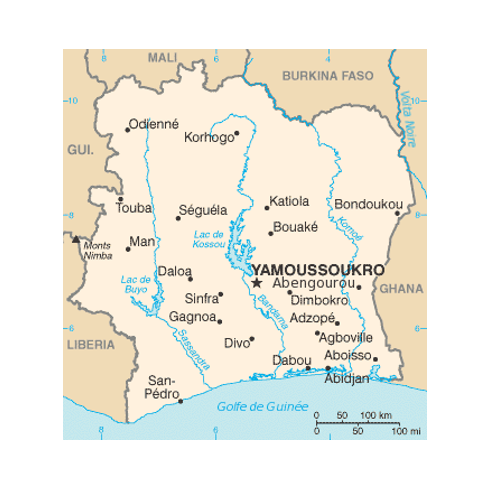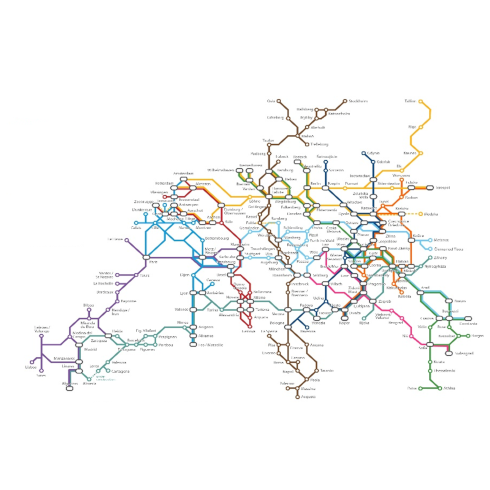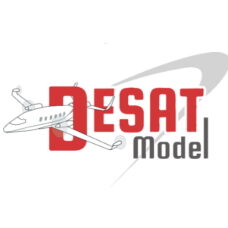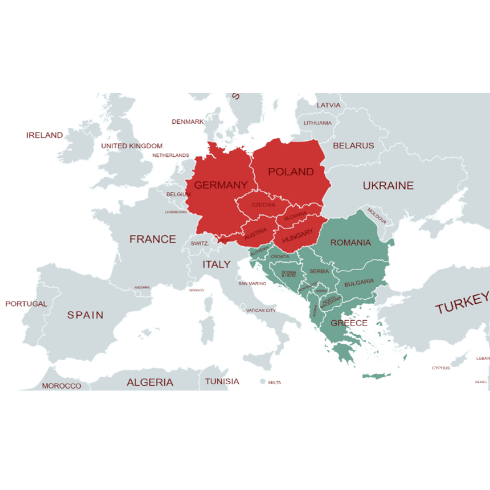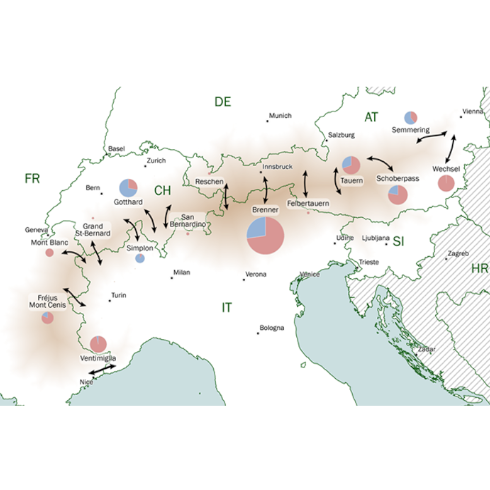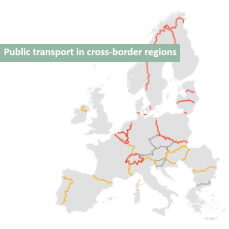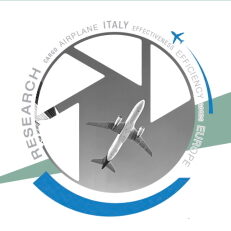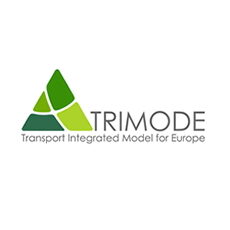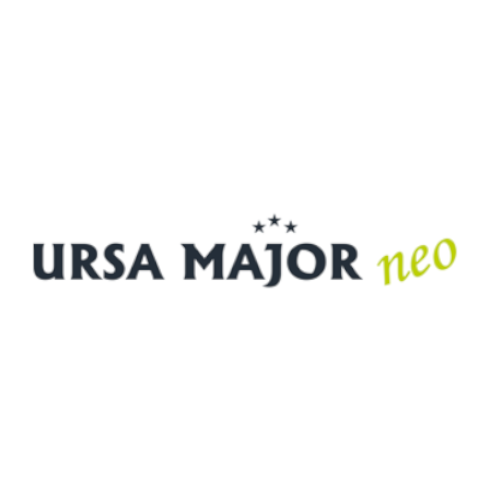TRT drafts studies in different areas of mobility and transport, for both national and international institutions and private clients.
Studies for Italian institutions such as the Bank of Italy, government ministries and local authorities relate to urban mobility, logistics, the transport component of the Italian national budget.
Internationally, TRT activity has covered different aspects of transport policies, such as charging, the introduction of new technologies, project assessment, analysis of the impacts of new legislation. Relevant beneficiaries include the European Parliament, the European Commission, the World Bank and the European Investment Bank.
At the same time, TRT carries out studies on mandate of private operators, such as motorway concessionaires or freight port managers. These studies build on a wide range of technical expertise combined with in-depth knowledge of the institutional aspects and of the sectorial policies.
- Exploratory study for the new proposal addressing market challenges for the development of Multimodal Digital Mobility Services and the Single Digital Booking And Ticketing Regulation The main objective of the study is to support the development of the European Commission’s proposals for two parallel and complementary regulations: The focus of the study is on medium-long distance passenger trips, above 50 km. The activities will include at first the market analysis on the two aspects covered by the study. On the MDMS demand side, existing and potential demand for the use of MDMS services will be explored, while on the supply side, the presence, practical availability and accessibility of options across the EU will be assessed through the analysis of 100 representative routes. Passenger transport services and online passenger ticketing will be analysed for different modes of transport: air passenger transport (including Norway), rail passenger transport, bus and coach transport and maritime transport. Based on the analysis, the study will also define different policy options and support the assessment of the related impacts through the application of a modelling framework consisting of 6 modules, including the strategic ASTRA model. Impacts on passenger choice and resulting modal shifts will be estimated together with the resulting environmental, economic and social indicators by Member State and in 5 year steps up to 2050. The Consortium is lead by RICARDO, including TRT, TIS and TEPR. TRT contributes to the project as it comes to:
- Identifying the untapped potential of completing key aspects of the Single European Transport Area (SETA) and of extending it to candidate countries Transport is a central pillar of European integration and a key pre-condition for the European Single Market. Access to seamless and efficient transport services and infrastructure across Europe is key to the functioning of the EU common market, affecting the free movement of people, goods, and services. The objective of the study is to provide a systematic analysis of the existing regulatory and non-regulatory barriers – as well as missing elements – that hamper the creation of the SETA and the completion of the Internal Market for the transport of goods and passengers and understand the economic impact of such barriers and missing elements. The study will use carefully selected case studies, to illustrate, with a combination of quantitative and qualitative analysis: TRT is the project coordinator of a 4-partner (Ricardo, M-FIVE, and TEPR) consortium, responsible for all activities of the studies, and main contact with DG MOVE
- Trade and Transport Facilitation Study on the Abidjan-Lagos Corridor Highway Development Project The core of the study, committed to TRT and IdeaConsult, is the analysis of the current process of border crossing by both passengers and freight within Cote d’Ivoire, Ghana, Togo, Benin and Nigeria. This analysis aims to identify any bottlenecks, whether they are legal, regulatory, or related to physical infrastructure, that complicate the crossing. The study then will propose measures at both national and regional levels that would significantly improve the current crossing systems in terms of both time and cost for passengers and goods crossing one or more borders along the corridor. TRT team will provide its expertise for tasks related to ICT, logistics, and transportation, through the involvement of selected key experts. The work includes organising on-site meetings, collecting data for the reconstruction of the state of the art in the fields of ICT, logistics, and transportation in the corridor and in the countries concerned. TRT team is responsible for drafting reports on ICT, logistics, and transportation themes and for presenting the results and content of the reports.
- Implementing a multimodal transport network model of the Rail Baltica Corridor and appraisal of the passenger and freight transport activity onto the Corridor Rail Baltica Global Project is the Baltic part of a rail transport infrastructure project with a goal to integrate the Baltic States in the European rail network. The expected core outcome is a fully interoperable railway line of more than 870 km in length meant for both passenger and freight transport as part of TEN-T Core Network (North Sea – Baltic Corridor). A first phase of the study, carried out in 2021-22 consisted of two main activities. The first activity was the implementation of a multimodal transport network model of the Rail Baltica Corridor covering in some detail (NUTS3 or even sub-NUTS3 zones) the area of the three Baltic countries (Estonia, Latvia, Lithuania) and of neighbouring regions of Finland and Poland plus the rest of Europe and world regions in a progressively more aggregated fashion. The transport model is a four-stage model, dealing with the estimation of generated demand, distribution, mode split and assignment to a multimodal network. The model covers both passenger and freight activity of interest for the planned rail infrastructure. All transport modes competing with rail are represented. Different rail services are explicitly modelled both for passenger (including Night-Train services) and for freight. Supporting the implementation of the model, a Stated Preference surveys was carried out to estimate parameters for the passenger demand model. The second activity of the first part of the study was the application of the model to estimate the passenger and freight demand onto the corridor in several future time thresholds, corresponding to different stages of the implementation of the infrastructure, and under three scenarios: a “do-nothing” scenario without the new infrastructure. a “Base scenario” with the new infrastructure. an alternative scenarios where alternative assumptions are made regarding intermodal rail transport services and the application of measures related to the EC Green Deal transport policy is considered. The application of the model provided several outputs ranging from aggregated statistics to link-based traffic and including impact indicators on energy consumption and emissions. The model was delivered along with the outcomes of the study and a training course focused on the use of the model was held for staff of Rail Baltica AS. This first phase of study was carried out by TRT with the support of PTV (DE), MDS Transmodal (UK), CSE COE (LV). TRT was the coordinator of the study and was responsible for developing the demand model (passenger and freight) as well as the Stated Preference survey. In a second phase (2024), some aspects of the model have been revised in order to improve the level of detail of the analysis and make the interaction with the model easier. In particular, the number of zones has been increased so that zones do not include more than one (non-urban) regional station. Following the revisions implemented, at the end of the second phase the model is recalibrated. The activities of […]
- Statistical sample survey on the international freight transport TRT has been again commissioned by the Banca d’Italia (Italian Central Bank) to carry out a four-year survey on the international freight transport, in order to: identify the unit costs of different transport modes for imports and exports; identify the components of ancillary costs; show in a matrix the abroad goods exchange; define the market share held by Italian actors in the maritime, air and rail transport sectors; estimate the turnover made by Italian ship-owners abroad. The surveys and analyzes carried out are used by the Banca d’Italia to estimate the Balance of Payments in Italy. As part of a consolidated partnership of more than twenty years, the activity constitutes the continuation of similar investigations conducted by TRT for Banca d’Italia since 1998. For more information (only available in italian) Survey on International Merchandise Transport 2023, June 2024. Link Survey on International Merchandise Transport 2022, June 2023. Link Survey on International Merchandise Transport 2021, June 2022. Link Survey on International Merchandise Transport 2020, June 2021. Link Survey on International Merchandise Transport 2019, June 2020. Link Survey on International Merchandise Transport 2018, June 2019. Link Survey on International Merchandise Transport 2017, June 2018. Link Survey on International Merchandise Transport 2016, July 2017. Link Italy’s international freight transport 2015, October 2016. Link The survey on the costs of international freight transport in Italy, September 2014. Link
- Pre-feasibility study for the establishment of a Vertiport in the Municipality of Piacenza The pre-feasibility study for the establishment of a vertiport in Piacenza is pioneering in the context of Urban Air Mobility themes and has been structured around three main lines of activity: market analysis, demand analysis (potential), and location hypotheses. The market analysis and its prospects involved an in-depth examination of electric vertical takeoff and landing (eVTOL) aircraft, their temporal outlook, and the technological barriers associated with such technologies. An overview of the global and national market was provided, and insights were developed regarding the ground infrastructure enabling these new services – Vertiports – as well as potential services, taking into account industry regulations. Furthermore, a detailed analysis was conducted on both global and Italian cases of experimental vertiport implementations, examining the regulatory framework in the sector. The analysis of potential demand was conducted using big data, derived from mobile network cells, and focused on exchange flows with possible attractor centres within a radius of approximately 150 km from Piacenza. These attractor centres included the city of Milan and the airports of Milan (Maplensa and Linate), Bergamo, Bologna and Turin. The potential locations for the vertiport within the territory of the Municipality of Piacenza were examined, taking into account the necessary infrastructure elements and European guidelines provided by EASA (European Union Aviation Safety Agency). The selection criteria favoured pre-existing, accessible areas. Finally, the estimate of the minimum required square footage and associated costs have been prepared.
- Contribution to the EU Urban Mobility Observatory, ex-ELTIS, facilitating the exchange of information, knowledge and experience in the field of sustainable urban mobility The EU Urban Mobility Observatory, previously known as ELTIS, was created more than 25 years ago, and it is now Europe’s main source of information on urban mobility. The Observatory, financed by the European Commission’s Directorate General for Mobility and Transport, facilitates the exchange of information, knowledge and experience in the field of sustainable urban mobility. It addresses individuals working in transport as well as in related disciplines, including urban and regional development, health, energy and environmental sciences. TRT collaborates with the EU Urban Mobility Observatory since 2017. The current contract, covering years 2024 and 2025, foresees for TRT to carry on the following activities: collection of regular updates and lessons learned from existing EU- funded urban mobility projects covering several EU funding programmes and initiatives with the objective to pinpoint valuable contributions and enhanced insights to enrich the EU Urban Mobility Observatory. Special emphasis is placed on key topics of interest within the thematic domains of all six EGUM sub-groups. Update and further develop the portal, developing new contents such as news in the field of urban mobility and case studies across Europe Provide administrative support to the EGUM sub-groups, particularly on “Urban Vehicle Access Regulations (UVARs)” and “Active Mobility and safety of vulnerable road users” Support on the follow-up on the Commission Recommendation on national SUMP support programmes Support on updating the SUMP Guidelines and quality review of SUMP reference materials For more information: Previous contact ELTIS + SUMI – 2022 – 2023 Previous contract ELTIS – 2017 – 2021
- Mapping study on digital and technical solutions to enable more effective and user-friendly UVARs, while respecting the principle of subsidiarity The broad objective of the study is to support the operation of more efficient, user-friendly and non-discriminatory UVARs across the European Union for both vehicle users, operators and city authorities. For vehicle users (private and commercial) the specific objective is to improve the ease and efficiency of UVAR pre-registration procedures while, for authorities, to ease the conformity checks of vehicles. This study will seek to achieve the abovementioned objectives by identifying and mapping EU interoperable technical and digital solutions (or combinations thereof), as well as respective realistic and feasible implementation options, that facilitate seamless travel across the EU. This further “mapping study” builds on UVAR Exchange results and is structured in 4 Tasks. Task 1 starts with the identification, mapping, analysis and further clarification of interoperable digital and technical solutions or their combinations thereof, including an analysis of what it takes to implement them on the ground. Task 2 will provide an overview of the identified technology combinations with its specific pros and cons, constraints and challenges, including the notions of user-friendliness and non-discriminatory aspects. It will investigate and suggest EU-wide interoperability standards needed for UVAR compliance and enforcement technologies and digital solutions Task 3 will build from the previous and draft a roadmap of actions. Task 4 is a transversal task that will concentrate all stakeholder engagement and consultation activities TRT leads Task 3 activities and is responsible for investigating digital tachograph and camera-based solutions including data exchange and enforcement practices and IT systems in use in Italy. Besides TRT, the awarded consortium is composed of Panteia (NL), MAPtm (NL) and Austriatech (AT). The study follows the previous European Parliament Preparatory Action, contracted by DG MOVE, for an “User-friendly information tool on urban and regional vehicle access regulation schemes” that generated the projects UVAR Box and UVAR Exchange (https://uvarbox.eu/) with TRT as partner of the two consortia.
- Design and assessment of the National E-Mobility Strategy in Jordan Electrification is one of the main options towards decarbonizing the transport sector. The Jordanian transport sector, currently reliant on fossil fuels, accounts for nearly 40% of the energy consumption in the country in 2020. Transport decarbonisation has to be addressed to achieve Jordan’s ambitious Nationally Determined Contribution (NDC) goals. From electricity-sector perspective, uncontrolled electric vehicle (EV) uptake may bring challenges such as increase in peak load and distribution grid congestion, but also present financial and technical opportunities due to new revenue streams. Seeing the potential and benefits of E-Mobility uptake, the Government of Jordan has included Designing a National E-Mobility Strategy as part of its Reform Matrix, under Pillar 9 Energy. To this end, the Ministry of Energy and Mineral Resources (MEMR) has been leading the effort in coordination with key stakeholders and implementing partners. The World Bank (WB), through the Jordan Growth Multi-Donor Trust Fund (MDTF), supports MEMR and GoJ in its mandate with required Technical Assistance (TA) activities. This project will inform the WB’s policy dialogues in Jordan related to scaling up E-Mobility, in the context of the GoJ’s effort to design, launch, and implement a National E-Mobility Strategy. This study will have a particular focus on energy-sector issues (notably charging infrastructure and charging tariff), but also build upon past efforts, consolidate previous findings, systematically assess the key issues at stake, and provide valid and actionable options in order to support GoJ’s formulation of a comprehensive National E-Mobility Strategy. TRT, supported by MRC (Spain), is leading the project and is responsible for the design and assessment of the strategy. As part of its activities TRT has developed the Jordan vehicle fleet model to forecast the uptake of electric mobility.
- Modelling European cities’ pathways to zero-emission urban mobility by 2030 through the development of potential transition scenarios This study modelled European cities’ pathways to zero-emission urban mobility by 2030 through the development of potential transition scenarios. Each scenario is built on different set of sustainable policy measures, whose impacts is quantified through a series of indicators as output results. The assessment is realized through MOMOS a quantitative tool which allows to simulate and quantify in a simplified way the impacts of potential mobility transition scenarios in cities. Four potential scenarios, each one with a different focus and a specific combination of policy measures, have been simulated and applied to five real European cities: Brussels, Madrid, Milan, Greater Manchester, and Warsaw. An in-depth data collection defined and reproduced the city characteristics at the base year, including socio-demographic aspects as well as mobility features. The main output of the study consisted in the calculation of the CO2 emissions reduction associated to each scenario. Besides that, a series of core indicators have also been calculated for the 2030 horizon. These included: modal split, public and private fleet electrification, car ownership, road safety, and air pollutants emissions. In addition, multi-criteria cost effectiveness analysis estimated costs and benefits associated to the four transition scenarios. Such analysis was based on four components: (implementation and maintenance) costs of the policy measures, environmental benefits, users’ transport costs and travel time, and revenues for the public administration and service providers. For more information: Clean cities website on the (E)Mission zero study, including technical reports and factsheet results. Briefing of the (E)Mission zero study Interactive tool to explore results of the (E)Mission zero study
- Ivory Coast – Elaboration of the National Logistics Plan The aim of the project is the elaboration of the National Logistics Plan of the Ivory Coast with the identification of strategies for the development of logistics in the country, the drafting of an action plan and the training on the simulation model realised. The work is characterised by the performance of the following activities: collection of data and information through field interviews and desk research with reference to freight transport and logistics in Ivory Coast; processing of the data and information collected in order to provide an overview of the current state of logistics in the country, both in terms of supply and demand for freight transport; analysis of the institutional, organisational and regulatory framework of the freight transport sector in the Ivory Coast; study of the country’s freight transport and logistics development programmes for the future years; elaboration of the National Logistics Plan of the Ivory Coast. In support of the plan, TRT is also responsible for the construction of a simulation model of the demand and supply of freight transport in the country, capable of providing a forecast of demand, also in relation to the constant growth of the national GDP and the planned infrastructural interventions both on the transport network and on the main nodes (such as, for example, distribution centres and port terminals).
- Scoping and Feasibility Study for a European Transport Market Study Client: RailNetEurope (RNE) RailNetEurope (in short, RNE), commissioned the consortium formed by TRT (lead) and HaCon a scoping and feasibility study for the development of a freight transport market study at the European level (European Transport Market Study, or ETMS). The need to investigate the technical characteristics, and the potential use cases of such a study stems from the scarce diffusion and lack of application of the Transport Market Studies made by individual European Rail Freight Corridors (RFCs) in the past. A European-level study would overcome the drawbacks identified with previous studies and would concretely support the necessity of optimising and coordinating efforts aimed at increasing the modal share of rail freight transport, in line with EU policy targets. The research process underlying the feasibility study was first grounded on a thorough analysis of existing RFCs’ Transport Market Studies, aimed at identifying the respective contents and structure, as well as the data sources and databases employed; further, the employment of EU-scale models was assessed with respect to the purposes of simulation and forecasting, and a wide stakeholder consultation strategy was activated, bringing i.a. infrastructure managers, railway undertakings, associations, port terminals, and members of the Rail Freight Corridors to the table. The project delivered a feasibility study with an accurate assessment of the actual possibility of making a Transport Market Study at the European scale, based on both the availability of necessary data and analytical tools, as well as the need to adequately and efficiently respond to the requests brought up by stakeholders. Specifically, several options for realising the study have been evaluated, accompanied by the definition of required analytical tools and methodologies. Based on the best solution, the main components of the actual study have been set, and guidelines for its realization have been redacted. For more information: RailNetEurope istitutional websire Dedicated page for Rail Freight Corridors
- Passenger demand for small aircrafts until 2050: design and application of a modelling tool to simulate future scenarios The background of the study is the European Clean Sky 2 programme, aiming at developing innovative technologies to reduce emissions and noise levels from aircrafts, while simultaneously developing and strengthening a globally competitive aeronautical industry in Europe. The scope of the programme does also include Small Air Transport (SAT), which is expected to contribute to the connectivity of remote regions in Europe and the rest of the world. The study provided an ATS level assessment and forecasts for Small Air Transport aircrafts, namely airplanes with passenger capacity between 9 and 19 seats and pressurized and unpressurized cabin compartment. A modelling tool has been developed to provide (i) the assessment with respect to passenger volume, fleet and flights for the base year 2019 and (ii) results for future years from 2025 to 2050 in five years steps. The main activities of the project have been related to: Review and analysis of available SAT concepts and potential business models; Design and development of the model for the estimation of demand for Small Air Transport aircrafts at European scale, supported by the related data collection and calibration process. The model is also accompanied by input and output interface, complemented with a user guide; Application of the model to forecasts future potential SAT demand for the reference scenario and two alternative scenarios by 2050; Analysis of European modelling results to evaluate the potential SAT demand for the rest of the world with a qualitative approach. TRT led the project and covered all the activities related to the model design, development and application. The subcontractor SEO Amsterdam Economics focused on the review of SAT concept and business models. For more information: Official site of Clean Aviation programme: description of Small Air Transport Transversal Activity.
- Definition of a strategy to exploit the potential of Greece as a gateway for logistics flows to and from Central The objective of this study is to support the Government of Greece in developing a Logistics Gateway Strategy and the related Implementation Plan to consolidate the role of Greece as maritime transhipment hub serving the international containerised traffic within the Mediterranean Sea and to pursue a transition from transhipment hub to a regional logistics gateway. The study approach is to assess and contextualize the opportunity to better position Greece’s logistics sector in order for Greece to become a more capable, more competitive and more attractive gateway linking Central Europe with international and intercontinental markets. To support the positioning of Greece, especially the port of Piraeus and Thessaloniki, the analysis develops the following steps: Quantitative mapping of the Central European Hinterland trades with a focus on south-east Asia (China) in order to understand the amount of freight traffic and the routes followed. This includes the intercontinental railway route across Asia between Europe and China. Operational mapping of the freight trades by involving relevant stakeholders (freight forwarders, intermodal operators, big retailers, etc.) mainlybased in Central Europe. The analysis provides a review of: maritime ports in Greece (Thessaloníki and Piraeus) and in Europe (Hamburg, Gdansk, Rotterdam, etc.), serving the Central European Market, freight corridors serving the Central European Market: the Pan European Corridor X and the Orient/East-Med TEN-T Corridor. In this study, TRT lead an international consortium of companies based in Greece (OPTILOG) and Austria (MC Mobility Consultants) to better cover the geographical scope of the study and with the partnership of MDST Transmodal as transport modeler expert in the container cargo shipping.
- Transalpine Observatory – Data collection and analysis of freight flows across the Alps The objective of the Observatory is to collect and make available the information for the EU-CH Terrestrial Transport Committee implementing and managing the Agreement on Terrestrial Transport between the European Union and Switzerland on 21 June 1999. As a part of the Consortium, TRT has collected, verified and analysed data on road, rail and combined transport activities through the Alps for Italian side. The types of collected data involved information on traffic, infrastructure, vehicles, transported goods, market operators, costs and environmental impacts. All data have been compared for the period 2020-2023 regarding the borders with France, Switzerland and Austria. One of the main interest of the project has been the evaluation in time of the modal split across the Alps useful for the reduction of transport’s environmental impact. TRT has also worked on designing and updating the cost model on road and combined transport, Unaccompanied (UCT) Accompanied (ACT) and Motorway Of the Sea (MoS), adoptable also for other spatial contests.
- New mobility patterns in European cities The objective of the study is to provide an extensive data collection covering the areas of passenger mobility, urban logistics, fleet composition, transport activity and traffic for the EU Member States. The project is composed of three tasks: An EU-wide survey covering all mobility, including both urban and non-urban parts, based on the methodology recommended by Eurostat with a specific focus on new ways of mobility in cities (shared mobility, active mobility and use of alternative fuelled vehicles and modes). The task includes a statistical meta-analysis of similar surveys done at EU and at national, major regional and local level to derive evolution over time of mobility patterns. A targeted survey on urban logistics in the major EU urban centres, addressed at businesses that provide delivery services for own account or for hire, to understand the composition and the mileage of the fleet, the characteristics of the vehicles, the corresponding activity, the fuel/energy consumption, the Origin-Destination characteristics of the supply chain and the carbon footprint resulting from their activities in cities. A complete and consistent dataset of fleet, activity and traffic data and relevant indicators on the economic, environmental and usage aspects of transport, for the period 2005-2018, covering all road, airborne, rail and waterborne passenger and freight transport. TRT led the systematic review of existing mobility surveys in Europe, analysed the results of the passenger mobility survey (Task A), supported the activities for the urban logistics survey (Task B), and developed the rail dataset (Task C).
- Study on “Providing public transport in cross-border regions. Mapping of existing services and related legal obstacles” In the EU it is widely acknowledged that border and cross-border regions need particular attention. About 30% of the EU population live in regions close to internal border. Despite the single market, cross-border activities still face bottlenecks hampering businesses and citizens. Cross-border transport is one central means to facilitate cross-border activities. Despite the importance of cross-border public transport to link regions across borders, to date, no European-wide and comprehensive inventory of cross-border public transport (CBPT) services exists. Thus, even the actual number of services is impossible to estimate. In view of this role of CBPT, this study: provides a comprehensive inventory of existing CBPT services along the internal borders of the European Economic Area and a sound and profound analysis thereof; develops an inventory of obstacles to the implementation of CBPT and further analyse them and possible solutions; identifies best practices with relevant case studies and develop a toolbox to support planners and implementers. Within the project TRT is responsible for: the analysis of cross-border rail transport services; the development of a web viewer to map existing services for all transport modes; the analysis of 3 case studies on the business models of cross-border public transport services.
- Airfreight transport in Italy, Cluster Cargo Aereo study The Cluster Cargo Aereo is a trade association of stakeholders operating in the air cargo market (forwarders, airlines, handlers). Its mission is to provide research, studies and statistics to promote an understanding of the sector and its challenges to relevant stakeholders. After its first study, released in 2019 and focusing on the supply of airfreight services (benchmarking of national and European airports competitiveness), the Cluster commissioned TRT a new study to better understand the airfreight demand and users preferences. TRT was committed to analyse the type of commodities and industrial sectors making the most use of airfreight services, identifying the factors that drive companies to modal and airport choice, including foreign terminals. The analysis was carried out through two main activities: a desk research, i.e. a statistical analysis of airfreight traffic flows (quantities/values) in the last 10 years and with respect to the most relevant types of commodities; a field research, namely a survey to a selection of relevant companies (export oriented manufacturers, freight forwarders, etc.) to gain insights on key research questions. With this study, TRT provided not only an up-to-date analysis of the national airfreight market, but also identified strategic actions for market development, particularly with respect to the sector-specific logistic needs coming from the survey. A particular focus was also devoted to Covid-19 emergency and to the related impacts on the airfreight sector. After the first study, presented in 2019 and focused on transport supply (competitiveness of national and European airports), and the second study on air freight transport demand of 2020, the Cluster has commissioned to TRT a new study in order to better understand the perception of the air cargo service in Italy. Therefore, TRT has realized a survey to the main manufacturing companies, integrated by an in-depth survey to the shipment companies, whose results have been introduced during the 5th Convention of the Air Cargo Observatory, where there was an audience of 200 stakeholders and companies of the sector. For more information (only available in italian) Airfreight transport in Italy, the study carried out by TRT. Go to the publication Digital conference for the presentation of the Cluster Cargo Aereo study. Milan, 26 October 2020. Download the presentation News (only available in italian) Press review by FEDESPEDI. Link Agroalimentare, ecommerce e aviocamionato: le tre scommesse del cargo aereo italiano. Aircargoitaly, 26 October 2020. Link Cluster Cargo Aereo e TRT – Secondo Studio Osservatorio Cargo Aereo. Fedespedi, 26 October 2020. Link La seconda edizione dell’Osservatorio cargo aereo: strategicità e potenzialità del trasporto aereo merci. Il giornale della logistica, 9 November 2020. Link La seconda edizione dell’Osservatorio cargo aereo: quando le merci volano. Il giornale della logistica, Dicembre 2020. Link
- TRIMODE PROJECT: DEVELOPING FOR THE EUROPEAN COMMISSION A EUROPE-WIDE TRANSPORT MODEL INTEGRATED WITH ENERGY AND ECONOMY TRIMODE (TRansport Integrated MODel of Europe) has been developed to support policy assessment at the European level. Thanks to its modular structure a large variety of policy scenarios can be analysed and a wide set of impacts can be estimated. The overall TRIMODE integrated modelling system comprises several components belonging to three main blocks: a Transport network model, an Economy model and an Energy model. The geographical coverage of TRIMODE includes the EU countries; all Candidate and Potential candidate countries; UK, Iceland, Norway and Switzerland; other external zones. The zoning system is based on NUTS 3 zones. Within EU, sub-NUTS 3 zones are used where necessary, reaching a total of 1732 zones. The TRIMODE model covers the period between the year 2010 (base year) until the year 2050, providing results at 5 years steps The model was developed over the years 2016 to 2020 on behalf of the European Commission by the consortium led by TRT Trasporti e Territorio and composed by PTV AG, E3MLab, MDS Transmodal and M-Five as key partners and ISI Fraunhofer, BHL and INRIX as subcontractors. The TRIMODE component models are developed in VISUM and GAMS with all additional coding outside these tools handled by PYTHON. These models are implemented within a single software platform. A web-based user interface allows to set up, run and analyse model results. Project flyer – Download THE TRIMODE INTEGRATED MODEL FOR EUROPE Presented at the European Transport Conference (ETC) 2017, the article provides an overview of the TRIMODE model and its applications, with some details on the passenger demand model and the network model. – Download TRIMODE FREIGHT & LOGISTICS MODEL OF EUROPE Presented at the European Transport Conference (ETC) 2017, the article describes TRIMODE’s freight demand model, specifying how links between economic transactions and freight transport flows are managed. – Download LONG-DISTANCE, MULTI-MODAL FREIGHT IN A CONTINENTAL TRANSPORTATION MODEL Presented at the Transportation Research Board (TRB) 2018 (and selected for publication in the Transportation Research Record), the article explains how two key characteristics of freight transport – multimodality and logistics – are modelled in TRIMODE – Download TRIMODE: INTEGRATED TRANSPORT MODEL FOR EUROPE Presented at the Transportation Research Board (TRB) 2018 (and selected for publication in the Transportation Research Record), the article explains how two key characteristics of freight transport – multimodality and logistics – are modelled in TRIMODE. – Download ENERGY AND FLEET MODELLING WITHIN THE TRIMODE INTEGRATED TRANSPORT MODEL FRAMEWORK FOR EUROPE Presented at the EURO Working Group on Transportation Meeting (EWGT) 2018, the article introduces TRIMODE’s energy and fleet model and explains its link to transport demand and the network model. – Download
- Analysis of ITS applications and solutions at logistics nodes Ursa Major neo project is co-financed by the Connecting Europe Facility of the European Union. The main goal of UMneo is to identify the best ITS solutions to interconnect the logistic nodes (ports and freight villages) and arches (road networks) for sharing each other information about traffic conditions or allow operators to book in advance some specific services. ITS (Intelligent Transport Systems) are known to be effective for several applications in the entire supply chain, e.g. for reducing congestions at gate terminals or along the road, for saving time and costs, for reducing the environmental footprint of logistics activities, etc. The Italian partners involved in UMneo are the ports of La Spezia, Livorno, Ravenna, Trieste, Venezia, the freight village of Verona and the road network operators ANAS S.p.A, Autovie Venete S.p.A., Autobrennero S.p.A. and Autostrade per l’Italia S.p.A. TRT was commissioned by RAM to describe the state of the art about ITS services and systems applied or planned in ports and freight villages infrastructures involved in the Ursa Major Neo project, pointing out the most relevant best practices. Final results come both from desk-analysis and specific interviews that TRT performed with the involved partners. For more information: Ursa Major Neo project Objectives of the Ursa Major project on NeoAutobrennero S.p.A. website

